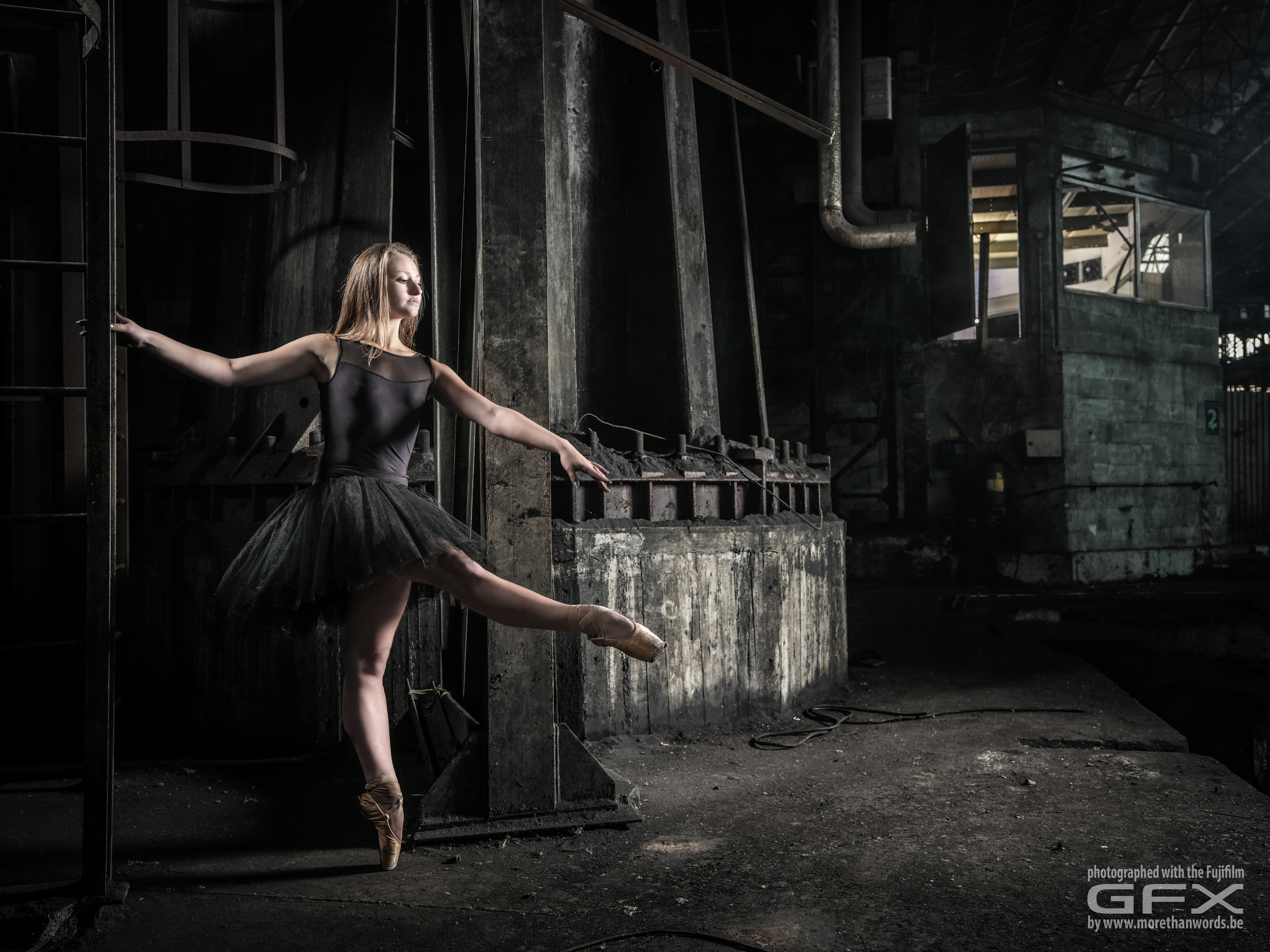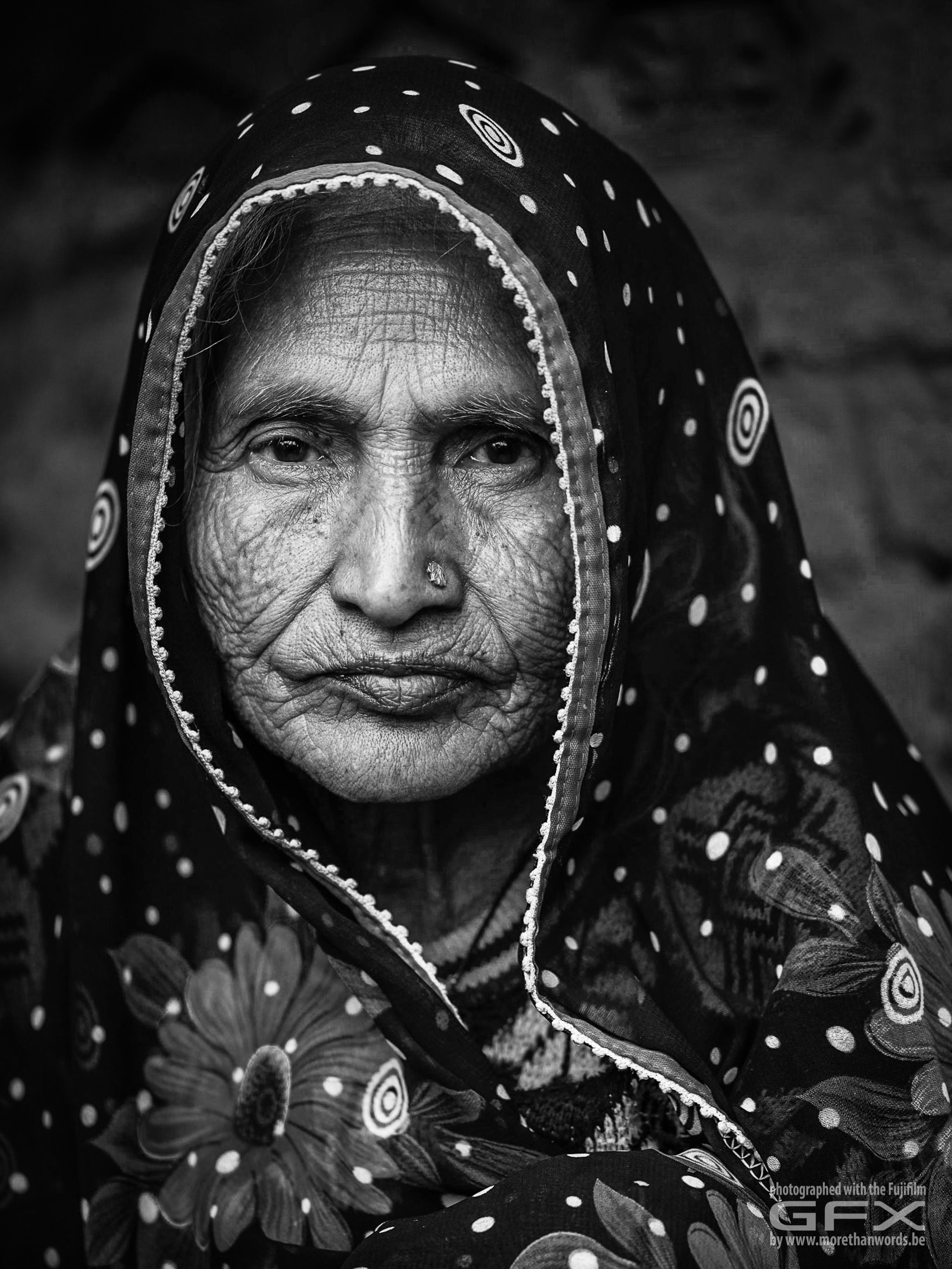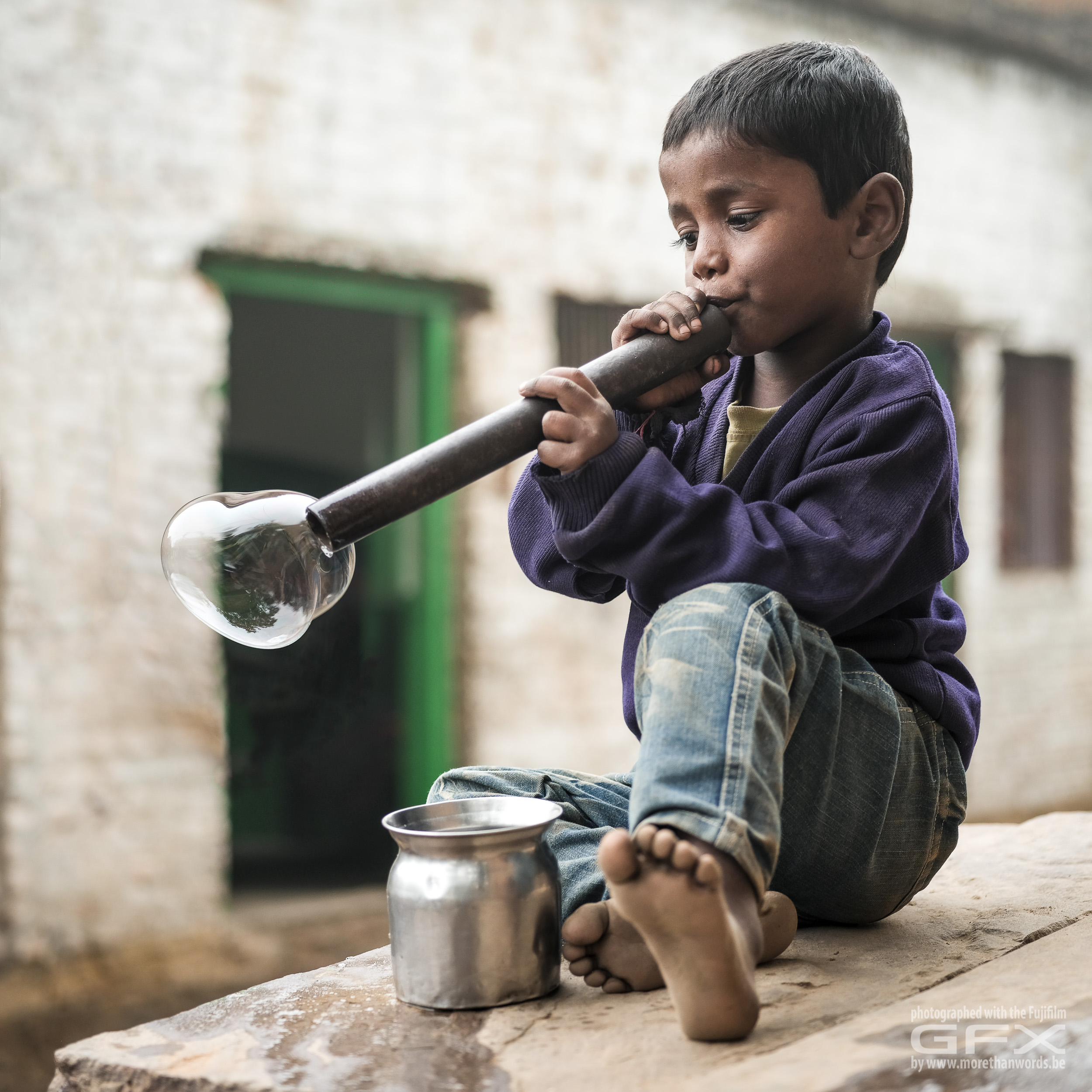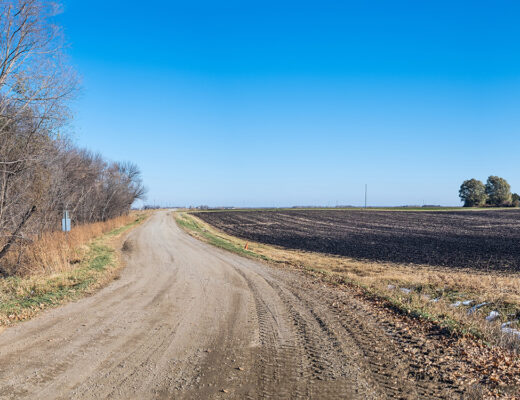Piet van Den Eynde, official Fujifilm X-Photographer from Belgium and a long time FujiLove contributor was lucky enough to have a chance of testing the pre-production model of the Fujifilm GFX 50 medium format mirrorless camera. I could not have passed on an opportunity of asking Piet a couple of questions about this hot new Fujifilm offering.
TOMASH: Piet, you have been shooting with most of the Fujifilm X Series cameras for the last couple of years and now you had a chance to extensively test the new Fujifilm GFX 50S camera. If you would have to encapsulate the advantages / differences between the APS-C size sensor cameras and the medium format GFX in three bullet points, what would they be?
PIET VAN DEN EYNDE: Well, first of all, I think Fujifilm was right not to pursue fullframe but instead, directly go for medium format. Not only because developing a fullframe camera system would be contradictory to their marketing statements that the X-Trans APS-C sensor is as good and resolves as much detail as many fullframe sensors. But on top of that, going directly for medium format now gives them three potential GFX buyers: 1) X-enthusiasts who love the X-system ergonomics and the Fujifilm films simulations and want the utmost quality. 2) Medium format photographers. They are the most obvious target group but on the other hand, some of those will already be heavily invested in a particular system which might make it more difficult to switch. I think the availability of lens adapters might be crucial here. Finally, I personally think that third, important group of potential GFX users lies in the photographers that now use the pro-level DSLR cameras. I am mainly thinking about fine art, landscape and portrait photographers: they’re used to the weight (and the price tag) of a heavier camera system already. For them, the GFX could mean still an (important) extra step in terms of dynamic range, quality and resolution while not being all that more expensive than what they’re used to. Now anyway, back to your original question! Here’s the three main points, in my opinion:
Image Quality: I use the term ‘Image Quality’ as an umbrella for Resolution and Dynamic Range. As good as the APS-C size Fuji system is, it is obvious that a sensor four times as big with only twice the megapixel count (so a larger pixel size) can and does make a difference. If you really want the best quality, the GFX is the camera for you. Does that mean the GFX totally replaces your other X-cameras, even if budget were not a problem? I don’t think so, because of the following two points.

I love to photograph dancers in urbex environments. Because I shoot wide, the people generally occupy only a small portion of the frame. With the GFX, I can still get incredible detail in those relatively small figures. It was freezing cold but Ashley was super patient while I was working through some beta-issues. / FUJIFILM GFX 50S | GX32-64mmF4 R LM WR @ 36.2 mm | 1/25 sec. @ f/6.4 | ISO 800
Speed and AF: Einstein said that all is relative and this also holds true for the GFX. Is it a fast camera? Compared to the X-T2 not. Compared to just about any other digital medium format camera, it is. 4 frames per second is a frame rate that owners of much more expensive medium format systems can only dream of! The same goes for AF. Does it focus fast in comparison to an X-Pro 2 or an X-T2? No, it doesn’t. But again, compared to the other medium format systems I know, it does and I have to say it kind of exceeded my expectations. And more specifically, it gives you focus points all across the sensor. So there’s no need to focus and recompose or focus manually as with some other systems. After all, the focus-and-recompose technique is really dangerous because the slighthest difference in measured versus actual focusing distance can cause your shots to be unsharp, especially with large sensors and open apertures.

The GFX isn’t a sports camera, but thanks to its relatively high frame rate (in medium format terms), I at least had a fighting chance to get a couple of sharp images from these wrestlers. / FUJIFILM GFX 50S | GX32-64mmF4 R LM WR @ 32 mm | 1/125 sec. @ f/5.6 | ISO 800
Size and portability: I switched from a fullframe DSLR to Fujifilm a couple of years back because of the weight. Now, I’m raving about the GFX. Does this mean I will switch from the X-T2/X-Pro 2 to the GFX? Not really. I am thinking of them as different tools for different jobs. The X-T2 will be my go-to camera for everyday work. The X100 will be my ‘holiday, family weekends and my I-want-to-take-a-camera-but-I-don’t-know-what-lens-to-bring’ camera, as it has been in the past. Their image quality hasn’t decreased since the GFX came out. As for the GFX, I will use it on those occasions where I think I will get the most advantage out of it, taking into consideration its strengths and weaknesses compared to the other Fujifilm cameras. I do think that the biggest ‘victim’ of the GFX will be my X-Pro 2. That is because after the X-T2 was announced and it became my workhorse camera, the X-Pro 2 had become more of a ‘specialty’ camera, the camera I used when I wanted to work slower, more premeditated. I think that role will now be overtaken by the GFX.
TOMASH: I consider you being mainly a travel photographer. Is GFX a camera easy to travel with and easy to photograph with? How is the portability and is it necessary to use a tripod when creating images with this camera?
PIET VAN DEN EYNDE: Yes, much better than I expected. The GFX itself is not that heavy. It’s the weight of a pro-level DSLR. If you’re coming from a fullframe DSLR, you should feel no difference or maybe even a positive one. I was mainly shooting the 32-64 so I had that on the body most of the time. I did use a Blackrapid Strap, for the first time in my life! I’m always afraid that it will make me look like RoboCop but I must say that it distributes the weight a lot better than hanging the camera straight off your neck. I had my SMDV BRiHT 360 flash, the 63 mm f/2.8 and some other accessories in a camera bag (the Vanguard Heralder 38 which I really like because of its hidden tripod/lightstand pouch). I could have put the 120 mm f/4 in the same bag, but I put it in a ThinkTank Modular Skin bag on the opposite side of my body, in order to spread the load better and also to be able to swap out lenses easier.
For my travel to and from India, I put everything in my F-Stop Loka UL. The nice thing about this bag is that it’s super lightweight and it fits in the overhead compartment. And, if you are ever forced to gate-check the bag for some reason, you can take out the Internal Camera Unit with your precious camera stuff and just gate-check the outer shell.

This image is actually a composite. I only had one flash with so I had my Voice Activated Light Stand, Alou, light both main characters separately in two separate frames and then combined them afterwards. / FUJIFILM GFX 50S | GX32-64mmF4 R LM WR @ 32 mm | 1/125 at f/11 | ISO 200
I did find myself using a tripod and especially a monopod (I have been using one by Manfrotto that lets me adjust the height single-handedly) more than I do with the other X-series. The reason is that the GFX can produce incredibly sharp files but the downside is, if your focus is off even a little, it also shows immediately. So I wanted to reduce camera shake as much as I could. A second reason is less technical. I find that I use this camera in a slower, more pre-meditated way. I will sometimes put it on a tripod and make multiple exposures and then combine several elements from those exposures into one final image or use parts of the extra shots to remove unwanted elements (people passing by) in the actual shot that I want to use. Using a tripod makes the assembly process a lot easier.
TOMASH: I am assuming that the dynamic range of the GFX is broader than the one of the APS-C size sensor cameras. How much broader is it?
PIET VAN DEN EYNDE: It is hard to tell because there is no official RAW support yet and even when it comes out, there is no guarantee that I’ll be able to read the RAW files that I shot with the early beta firmware I had on the camera. That’s also the reason why I not only shot RAW but also JPEG with the Pro Neg S film simulation most of the time. It’s not too contrasty or too saturated. It’s always easier to add contrast and saturation in post, than it is to remove it. I also shot Super Fine JPEG, which is a new setting and gives JPEG files of 10 to 20 megabytes, depending on the image content. So all the images you see in this blog post are actually all JPEGs that were further processed in Lightroom. And from that experience, I am very confident that the dynamic range and the ability to restore shadow and highlight detail in the raw files will be incredible.

One of the reasons I love the GFX files so much, is because of the limitless post-processing options it opens up. You can do just about anything with the image: lift shadows, turn down highlights, and so on. The colour grading on this portrait of BMX rider Barre (www.barrebmx.com) was done with my one of my Lightroom preset packs (www.lightroompresets.be).
TOMASH: What kind of output of your images (web, prints) should you be thinking about in order to actually notice and enjoy the overall difference in resolution and dynamic range of the images this camera is able to produce?
PIET VAN DEN EYNDE: Well, people always think of big advertising campaigns when they think of medium format, but I think there’s a lot more to it. For example, if you like to print big (or have files printed) on an inkjet printer, the GFX native resolution will allow you to print images of 150 cm long at a resolution of 150 dpi, which is adequate for large format inkjet printing, without upsampling anything in Photoshop. That’s massive. If you carefully increase your file size in Photoshop using the Bicubic Sharper (Enlargements) option, 1.5 x 2 meter prints and even larger with super fine detail become a reality. But of course, not everyone will want to print that large, which brings us to another advantage: cropping. Although I try to get things right in camera, that is not always possible.

This is a horizontal crop out of a vertically oriented original. It’s still over 24 megapixel. That’s one of the joys of using the GFX. / FUJIFILM GFX 50S | GX32-64mmF4 R LM WR @ 44.9 mm | 1/125 sec @ f/7.1 | ISO 320
For example, with this shot of the sadhu with the dogs, I was setting up for a stylised, flash-lit, dog-less portrait when suddenly these dogs appeared in the frame (in India, dogs are rarely very far out of the frame, anyway). So, I wanted to capture a more ‘slice-of-life’ like picture with my subject in a less posed way, but I had no time to change the camera’s orientation. With the GFX, I just cropped a horizontal image out of a vertical one and the resulting file is still over 24 megapixels. That’s the entire resolution of an X-T2!

The fancy blue light in the background of the previous picture isn’t always there. I put a Cactus RF60 flash with a blue gel behind the bars of the door because I thought the light would contrast nicely with the orange clothes of the sadhu. The main light was an SMDV BRiHT360 which I fired through an SMDV 85 gridded octa. At 360 Ws, the BRiHT is a surprisingly powerful flash considering it’s only 1.25 kg and therefore a great travel companion for the GFX or any other X-series camera. Setup shot © Serge Van Cauwenbergh | www.fotografieblog.be
This resolution will also let you experiment with different aspect ratios while still maintaining large files. For example, I love to shoot square. But on my X-T2 (or any other 24 megapixel camera), that leaves me with a 16 megapixel file. On the GFX, I still have a 34 megapixel square crop. Another nice new aspect ratio that you can set in the camera is 65:24. It’s very panoramic and it still leaves you with over 24 megapixels of data!
Finally, the advantage of the increased dynamic range is there for everyone. Whether you print billboards or just want to upload a shot to Facebook, the ability to restore shadow and highlight detail is equally handy to have.
TOMASH: Which GF lenses did you have a chance to work with? What are your thoughts on them?

The Filter Bar in Lightroom is super handy to analyze your shooting habits. I share tips like these in the Lightroom videos that I make for Fujilove Magazine.
PIET VAN DEN EYNDE: Well, here are my official Lightroom stats. I shot some 4.000 images, an overwhelming majority (87 percent) with the 32-64. This isn’t a surprise because I love to shoot wide. On the APS-C X camera’s, my favourite lenses are the 10-24 and the 16 f/1.4. As you can see, of those 87 percent, 60 percent were shot at 32 mm. This corresponds to about 25 mm in fullframe terms (the conversion factor is 0.78).
For the traditional portraits, like the one below, I used the 120 mm f/4.

At speeds of 1/125th, the OIS of the 120 mm really isn’t a luxury. / FUJIFILM GFX 50S | GX120mmF4 R WR @ 120 mm | 1-125 sec at f – 4,0 | ISO 500
It’s a super sharp lens and I love the fact that it’s stabilised. It’s also got macro capabilities, but that is of less interest to me. The only drawback is that it is f/4 and if you’re used to the 56 f/1.2 or the 90 f/2, that makes a big difference in terms of how much light gets in. That’s why for traditional portrait work, I’m really looking forward to the 110 mm f/2, which is two stops faster. That’s the difference between being able to shoot at 1/200th versus 1/50th…

The 63 mm f/2.8 turns the GFX into as much as a ‘walkabout’ camera as possible. / FUJIFILM GFX 50S | GX63mmF2.8 R WR @ 63 mm | 1/125 at f/2,8 | ISO 400
Finally, I shot a couple of frames (3 percent to be exact) with the 63 mm f/2.8. Note that this low number is not an appreciation of the lens’ quality. It’s just not my favourite focal length (50 mm fullframe equivalent) to shoot at. However, the couple of shots that I did shoot with it, I was really surprised at its sharpness and it’s ability to isolate foreground from background thanks to the relatively wide open aperture of f/2.8. And of course, it’s small and lightweight so it makes the GFX as ‘walkabout’ of a camera as possible!

Even at f/4, the depth of field on the 120 mm lens is super shallow, as you can see from this image. This 1:1 view corresponds to the bright green rectangle in the Lightroom navigator.
PIET VAN DEN EYNDE is a Belgium-based photographer and Adobe Photoshop Lightroom Certified Expert. He offers training on using on- and off-camera flash (working with Speedlights) and postprocessing with Adobe Lightroom, Photoshop and plug-ins such as Nik Software. Apart from the group workshops (in Dutch), he is also available for private tutoring (Dutch or English – both in person as online) or tailored group workshops for companies, events or photo clubs in Dutch or English, in Belgium or abroad. He has also written a number of Dutch books on travel photography, flash photography and Lightroom and English eBooks on various aspects of photography and Lightroom. Visit Piet’s website at MoreThanWords.be.



















